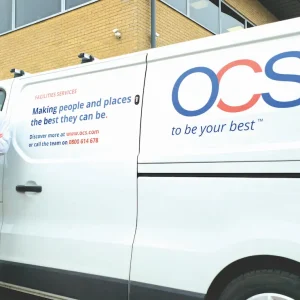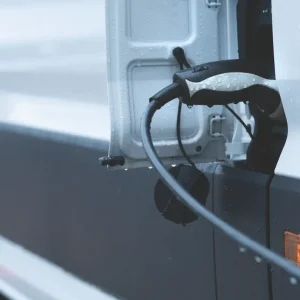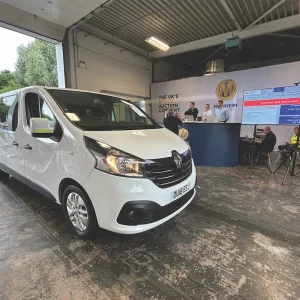The genuine car-derived van – a passenger vehicle merely devoid of its rear seats and side glazing – was once the LCV mainstay, and everybody built one. They were most commonly based on estate cars – the Ford Anglia then Escort, Morris Minor and Mini Travellers – and probably the best use to which the awful Morris Marina was ever put. As the estate was killed off by the hatchback, the car-derived van followed suit. The truncated side view reduced load volume, and the car cube designs of the Fiat Fiorino, Renault Extra, Vauxhall Combo and Ford Courier took the lead.
The coupe-esque profile of this seventh-generation Fiesta robs volume, and a straight 1.0m3 of load space is all the Fiesta Van can muster. Height is the real limit to volume, since a load length of 1.3m and a distance between the wheel arches of 1.0m is actually quite good considering the vehicle’s overall size. Rubber flooring, side insulation panels and four lashing eyes give it practicality, but the cab bulkhead means no clever long load-through trickery here. Weight-wise, it’s all pretty good, with a payload range from 485kg to just over the magic half-tonne depending upon engine and specification, with the diesel slightly heading the petrol version at all points. It will even tow a 750kg trailer load – the unbraked limit – if you really want the little Ford to earn its keep.
Of course, few will be subject to such labours – this is the clichéd florist van, the painter’s partner. That’s not to belittle its position in the market, since it’s ideal for these roles. It’s compact, easy to drive and park in the urban environment, has good fuel economy and low CO2, is cheap to operate, and is well equipped. Plus, it’s really fun to drive: the punchy 1.0-litre three-cylinder petrol-turbo Ecoboost unit with the six-speed gearbox is a joy.
The diesel, a 1.5 TDCi as you’d expect, has low-down pull that fades fast. But for this sort of duty the petrol is the best choice, as the diesel’s economy gain is marginal and character minimal.
In the cab it’s all good news. The seats are superb – this is a light van based on a plain vanilla hatchback and they are as good as anything this side of a full-suspension seat out of a 44.0t LGV. Add the optional infotainment system, with Bluetooth, satnav and voice control, with standard (slightly schizophrenic) DAB radio, climate control and pleasantly light controls, and it’s no chore at all.
For constant urban work the diesels have a reputation for particulate filter issues, and since Ford gives no separate warning light for this it illuminates the main engine fault light, which is an MOT failure. The satnav freezes regularly, only resetting when you lock/unlock remotely, but otherwise a dealer-serviced example should be decent. It’s true there may be virtually no competition these days, but no matter, it’s still no contest: the Fiesta reigns.
Five best options
1) Petrol engine
2) Six-speed transmission
3) Infotaintment system option
4) Sportvan version
5) Dealer demonstrators with approved accessories
Five best avoided
1) TDCi engine
2) Five-speed transmission
3) Basic trim versions
4) Towing use
5) Aftermarket accessories
Second-hand buys
|
Version |
Plate |
Year |
Mileage |
Price ex.VAT |
|
1.5TDCi 95hp |
66 |
2017 |
31,000 |
£5,900 |
|
1.5TDCi 95hp |
17 |
2017 |
79,300 |
£6,995 |
|
1.0 125hp |
68 |
2018 |
13,100 |
£11,995 |
|
1.0 125hp |
69 |
2019 |
3,000 |
£13,750 |
|
1.0 125hp |
±69 |
2020 |
Delivery |
£13,999 |





